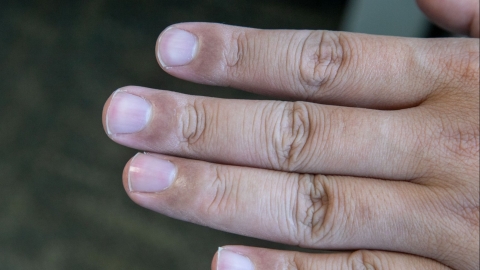How to correct a crooked finger bone
Under normal circumstances, crooked finger bones may result from congenital developmental abnormalities, improper realignment after trauma, tenosynovitis, rheumatoid arthritis, or malunion of finger fractures. It is recommended to seek timely medical attention, identify the underlying cause, and then improve the condition under a doctor's guidance through general treatments, medications, surgery, and other methods. A detailed analysis is as follows:

1. Congenital developmental abnormalities: Poor development of finger bones during fetal stages can lead to crooked finger bones after birth, often without significant discomfort. If appearance or function is affected, custom orthotic devices can be worn under medical guidance. Long-term external force correction can gradually improve the shape, with better results typically seen in children. The specifications of the orthotic device should be adjusted regularly.
2. Improper realignment after injury: When fractures or joint dislocations in the fingers are not promptly and properly reset following trauma, healing may result in crooked bones. If the injury occurred recently, a doctor may assess and perform manual reduction, followed by immobilization with a splint for 4–6 weeks. If malunion has already occurred, an individualized correction plan must be developed based on the specific situation.
3. Tenosynovitis: Chronic strain can cause adhesions between tendons and tendon sheaths, pulling on the finger bones and causing them to grow crookedly, accompanied by pain and limited movement. Patients should use medications such as diclofenac diethylamine gel, ibuprofen gel, or naproxen sodium tablets as prescribed to reduce inflammation.
4. Rheumatoid arthritis: Autoimmune dysfunction triggers joint inflammation that damages the structure of finger joints, leading to crooked and deformed bones. Patients need to take disease-modifying drugs such as methotrexate tablets, leflunomide tablets, and hydroxychloroquine sulfate tablets as directed by their physician, and wear joint supports to prevent worsening deformities.
5. Malunion of finger fractures: Improper immobilization or premature movement after a finger fracture can lead to misaligned healing of the broken bone ends, resulting in crooked bones. If hand function is impaired, corrective surgery for malunion may be required—realigning the fractured segments and stabilizing them surgically. Postoperative rehabilitation exercises should be conducted under medical supervision to restore finger mobility.
In daily life, it is important to protect the fingers from excessive strain or re-injury. Regular follow-up visits during correction treatment are necessary to adjust the treatment plan according to recovery progress. Nutritionally, consuming adequate calcium- and protein-rich foods can support bone healing.




